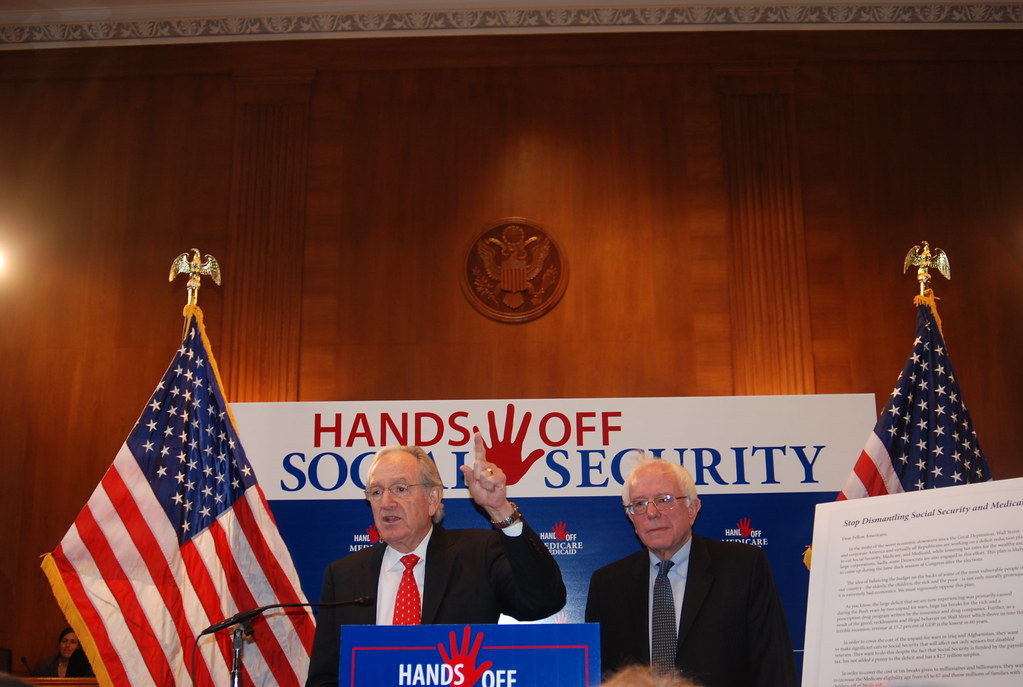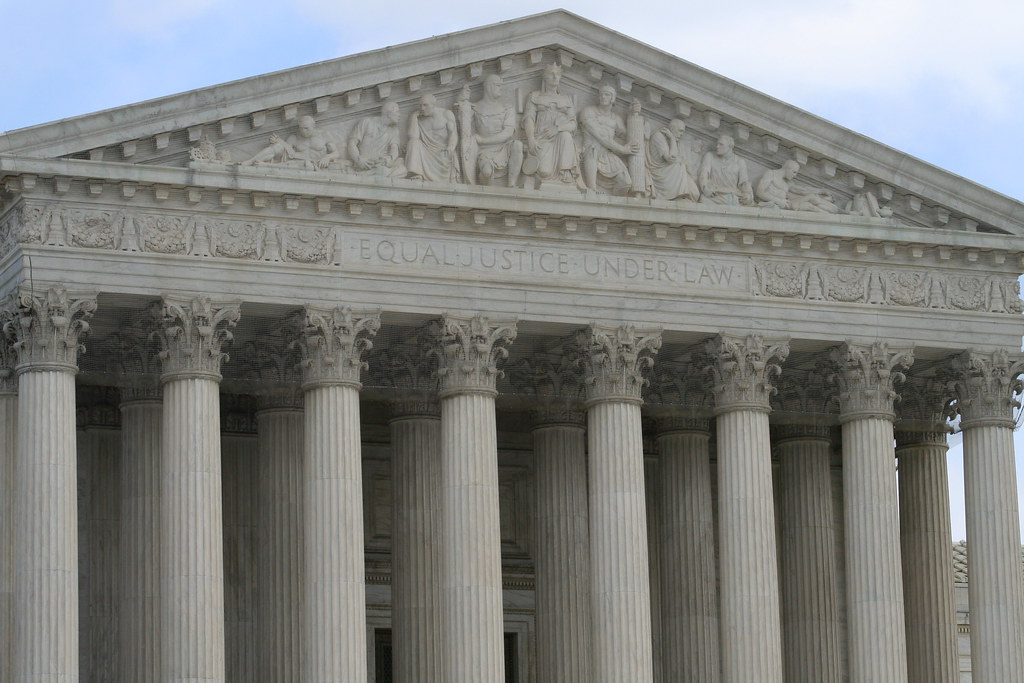
Let’s dive into a conversation that touches the lives of millions of Americans: the complex, vital, and sometimes contentious topic of Social Security. It’s a program deeply embedded in the fabric of American life, designed to provide a foundational layer of financial security for retirees, survivors, and those with disabilities. Yet, it’s also a system facing significant challenges, prompting a robust debate about its very structure and future. Some voices argue that the current system is fundamentally flawed and perhaps shouldn’t exist in its present form, advocating for dramatic alternatives like privatization.
The story of Social Security begins in a different era, born out of the Great Depression’s economic turmoil. President Franklin D. Roosevelt signed the Social Security Act into law on August 14, 1935, establishing a social insurance system grounded in a powerful idea: workers would pool a portion of their wages to create a collective safety net. This pooled fund would then be used to protect one another and their families from the wage loss that came with retirement. The initial vision was clear and focused: provide a basic level of monthly income to workers who contributed to the system.
Initially, eligibility was limited to workers aged 65 and older. But the program, known today as the Old-Age, Survivors, and Disability Insurance program (OASDI), wasn’t static; it evolved over time to meet changing societal needs. Just a few years after its inception, in 1939, benefits were extended to the spouses and minor children of retired workers. This was a significant expansion, recognizing the family unit’s reliance on a worker’s income. The introduction of “survivors’ benefits” also meant that the families of workers who passed away prematurely could receive support, offering a crucial safety net during times of immense loss.
The program continued to grow, embracing more facets of economic vulnerability. In 1956, benefits for disabled workers were added, acknowledging that wage loss isn’t only caused by aging but also by debilitating health conditions. The minimum age for receiving old-age insurance payments was also lowered to 62, first for women in 1956 and then for men in 1961, offering flexibility for those who might need or want to retire earlier, albeit often with reduced benefits. These expansions solidified Social Security’s role as a broad social insurance program, extending far beyond just retirement income for older workers.

While Social Security was initially intended to supplement pensions and personal savings, its role has shifted dramatically over the decades. For many Americans today, Social Security payments aren’t a supplement; they’ve become the primary retirement plan. This wasn’t necessarily the original design, but it’s a reality shaped by economic shifts, notably the decline of employer-funded defined benefit pension plans. Back in 1980, 39 percent of American workers had such pensions. By 2007, that percentage had fallen to just 20 percent. This trend means that the safety net Social Security provides is now, for a large segment of the population, the main pillar supporting their financial well-being in retirement.
The statistics underscore this reality quite starkly. By 2014, a significant portion of retirees were heavily reliant on Social Security. About 22 percent of married retirees and a striking 47 percent of unmarried retirees were relying on Social Security for 90 percent or more of their income. This isn’t just supplemental income; it’s the bulk of what keeps food on the table and covers essential expenses for nearly half of unmarried seniors. At the end of 2014, some 59 million people were receiving benefits, a number that included 42 million retired workers and their dependents, 11 million disabled workers and their dependents, and 6 million surviving relatives.
Understanding how Social Security is funded is key to grasping its current challenges. It doesn’t function like a traditional savings account where your specific contributions are held individually and invested for you. Instead, Social Security operates as a pay-as-you-go system. This means that the taxes collected from the current generation of workers are used to pay the benefits of the preceding generation’s retirees and other beneficiaries. It’s a system built on an intergenerational contract, where each working generation supports the one that came before it.
The funding comes primarily from payroll taxes, formally known as the Social Security Federal Insurance Contribution Act (FICA) taxes. In 2015, U.S. citizens saw 6.2 percent of their earnings (up to a certain limit, which was $118,500 that year) deducted for Social Security. Employers matched this contribution, also paying 6.2 percent of each employee’s earnings up to the same limit. As of March 10, 2021, the withholding rate remained the same: 6.2 percent for both the employer and the employee. These taxes flow into the Social Security trust fund, which holds reserves intended to help cover benefits when current tax revenues are insufficient.

While workers contribute diligently through these payroll taxes, it’s an important, and perhaps surprising, point that the Social Security Act entitles workers to receive benefits, but these benefits are not guaranteed by law in the same way that, for instance, a private contract might guarantee a specific payout. The federal government does not have a legal liability to pay retirees the money they paid into the system over their working careers. This means Congress retains the authority to change the rules regarding benefit eligibility or the level of benefits at any time. This aspect introduces a degree of uncertainty for current and future beneficiaries, a point often highlighted by those who question the current system.
As of the end of 2020, the number of people receiving benefits had grown to about 65 million. This included 46 million retired workers and 3 million of their dependents, 8.2 million disabled workers and 1.5 million of their dependents, and 6 million surviving relatives of deceased workers. This vast number of beneficiaries underscores the program’s reach and its importance in providing financial stability for a significant portion of the American population.
Despite its vital role, Social Security faces a widely acknowledged, looming financial challenge: projected insolvency. The Social Security trust fund has been paying out more in benefits than it collects in employee taxes since 2010. This is a critical turning point, marking the moment when the system started relying on its accumulated reserves to cover scheduled benefits. The projections for when these reserves will run out have shifted slightly over time, but the core problem persists. According to the 2015 annual report of the Social Security Board of Trustees, the cost of benefits would exceed tax revenues starting in 2020, and the program was projected to become insolvent when reserves were exhausted in 2034. At that point, without changes, the system was projected to only have enough tax revenue to pay 79 percent of benefits owed.
The projections in subsequent years reinforced this concern. The 2020 Social Security Board of Trustees report indicated insolvency by 2035, estimating the government would be able to pay about three-quarters of benefits. More recent reports bring the date even closer. A May 6, 2024, report from the Trustees stated that retirees would only receive 83 percent of their benefits after 2035 if Congress doesn’t act. And most recently, the June 2025 report projected that the program, with its roughly 61 million beneficiaries, will be insolvent by 2033, leading to a 23 percent reduction in benefits unless legislative action is taken.

Several powerful demographic and economic factors are contributing to this projected insolvency. A major factor is the aging of the American population, often referred to as the “silver tsunami” or “gray tsunami.” Millions of post-World War II baby boomers began reaching retirement age in 2011, and by 2030, all baby boomers will be over 65 years old, an estimated 73 million people. This demographic shift means a much larger proportion of the population is moving into the beneficiary category, while the relative size of the working population contributing taxes is not keeping pace. By 2034, older adults are projected to outnumber people under 18 for the first time in U.S. history.
Increased life expectancy also plays a significant role. In 1935, when the program began, the estimated life expectancy was 61.7 years. By 2010, it had risen to 78.7 years. People are living longer in retirement, collecting benefits for more years, which puts a greater strain on the system’s finances. This is a positive development for individuals, certainly, but it presents a fiscal challenge for a pay-as-you-go system designed in an era of shorter lifespans.
Simultaneously, declining birth rates mean fewer workers are entering the workforce to support the growing number of retirees. Birth rates have fallen from more than three children per woman during the baby boom (1946–65) to 1.7 children per woman in 2019. To simply replace the baby boomer generation and maintain the worker-to-beneficiary ratio needed for the current system, a rate of 2.1 children per woman is needed. This decline has significantly impacted the ratio of workers paying into the system compared to beneficiaries drawing from it.

The worker-to-beneficiary ratio highlights the core demographic challenge. In 1940, there were a remarkable 159.4 workers for each beneficiary. This ratio had dropped dramatically to 5.1 workers per beneficiary by 1960, and by 2013, it stood at just 2.8 workers per beneficiary. This shrinking base of workers supporting an expanding base of beneficiaries is the fundamental driver of the projected insolvency.
This looming financial challenge has fueled a long-standing debate about the future of Social Security, with some arguing that the system as it currently exists is unsustainable and requires fundamental change. One prominent proposal has been the partial privatization of Social Security, allowing workers to manage their own retirement funds through personal investment accounts. This idea gained traction during the 1990s as politicians and think tanks began exploring options to address the impending financial difficulties.
In January 1997, a report from the Advisory Council on Social Security offered three proposals to alter the program, all involving investing retirement contributions in the stock market as a way to ensure future solvency. While one plan suggested the government invest money from a common pool, two others focused on establishing individual accounts for each worker – one for publicly held accounts and another for private accounts. These proposals marked a key moment in introducing the concept of individual investment into the Social Security reform discussion.

A partial privatization plan using private accounts specifically garnered support in the following years, primarily from Republican politicians and conservative think tanks, though some moderate Democrats also showed interest. While the specifics varied, the core idea was consistent: a portion of each individual’s payroll taxes would be diverted away from the traditional trust fund and instead placed into personal accounts similar to IRAs or 401(k) plans. This shift represented a fundamental move away from the collective, pay-as-you-go model towards an individual, investment-based approach.
Proponents of privatization argue that the current system’s projected insolvency means that a better system is urgently required. They point to the shrinking worker-to-retiree ratio and the fact that Social Security has been paying out more than it receives since 2010. Using the existing system to avert collapse, they contend, would necessitate difficult measures like deep benefit cuts, heavy government borrowing, or substantial tax hikes. Switching to private retirement accounts funded with existing payroll taxes is presented as a potentially better solution, one that could “reduce Social Security’s debt and bring the system back into solvency,” according to the Cato Institute’s Project on Social Security.
Another key argument in favor of private accounts is the potential for retirees to see higher returns on their investment, ultimately putting more money in their pockets. They often compare the returns offered by the current Social Security program to those available in private investments. The average real return on investments in the S&P 500 between 1984 and 2014 was a much higher 6.38 percent, compared to the estimated return gained by medium-income two-earner couples in Social Security (between 2.67 percent and 3.91 percent return on their contributions as of December 2014). This difference in potential returns is a powerful draw for those who believe individuals could achieve greater financial security by managing their own funds.

Martin Feldstein, who chaired the Council of Economic Advisers during Ronald Reagan’s presidency, offered a compelling illustration of this potential. He suggested that with a private account earning a modest 5.5 percent real rate of return, an individual with $50,000 of real annual earnings during their working years could accumulate enough to fund an annual payout of about $22,000 after age 67. This, he argued, could essentially double the current Social Security benefit they might otherwise receive. The promise of potentially higher retirement income through market-based returns is a central pillar of the argument for privatization.
Furthermore, proponents emphasize that private accounts would empower individuals, giving them control over their retirement decisions. They argue that Americans are capable of making their own informed choices about how their retirement contributions are invested. Peter Ferrara, formerly of the International Center for Law and Economics, stated that private accounts would “allow workers personal ownership and control over their retirement funds and broader freedom of choice.” He even suggested that if accounts were optional, like in a past proposal, workers would be free to choose between the private option and the traditional framework, highlighting the element of personal autonomy.
The potential for individual investment accounts to boost economic growth is another argument frequently raised. Advocates point to examples like Chile, which privatized its pension system in 1981. In the decades that followed, the savings accounts established generated the equivalent of about 40 percent of the country’s GNP, and Chile’s annual growth rate rose significantly, according to José Piñera, Chile’s former secretary of labor and social security. Peter Ferrara echoed this sentiment, stating that the reduced tax burden and increased savings and investment resulting from personal accounts “would substantially boost economic growth,” leading to “more jobs, better jobs, and higher wages and overall income.”
Advocates also suggest that investing in a private account would remove the uncertainty inherent in the current government-controlled program. A 2010 Gallup poll found that a significant 60 percent of currently working adults assumed they would not receive Social Security benefits when they retire. With private accounts, the argument goes, individuals would be paying into a fund that they control, rather than a government-controlled trust fund that faces projections of running out of money before they might receive their earned benefits. Edward P. Lazear, chairman of the President’s Council of Economic Advisers during the George W. Bush presidency, stated that private accounts “enhance, rather than reduce, the likelihood that contributors will receive what they expect. Benefits are more, not less, secure with private accounts.” He contrasted this with the potential for government to change rules or reduce benefits, noting that returns on investments like U.S. Treasury bonds “will be paid with virtual certainty.”

It’s important to note that proponents of privatization often envision a system where private accounts are restricted to low-risk investments, mitigating concerns about workers losing their savings in volatile markets. Past proposals, like President Bush’s 2005 plan, would have limited investments to relatively low-risk options, such as “a conservative mix of bonds and stock funds.” This approach aims to provide the benefits of investment returns while protecting against the significant downside risk of high-volatility ventures.
Perhaps one of the most compelling arguments for private accounts is the idea that they would grant workers a contractual right to retirement benefits, a right proponents argue is missing from the current Social Security system. They often cite the 1960 Supreme Court case Flemming v. Nestor, where a legal immigrant eligible for Social Security benefits was denied his retirement money after being deported, despite having paid into the system for 19 years. This case is used to illustrate that under the current system, benefits are not an absolute contractual right that workers fully own.
Michael Tanner, a Senior Fellow at the Cato Institute, articulated this point, stating that under a privatized system, workers would have “full property rights in their retirement accounts.” He argued that they would own the money, similar to how people own their IRAs or 401(k) plans, and that “Congress would have no right to touch that money.” This sense of personal ownership and security is a powerful argument for those who feel their contributions under the current system lack the certainty of private property.

While the idea of shifting Social Security towards individual investment accounts presents a compelling vision for its proponents, this approach is far from universally accepted and faces substantial criticism from those who believe it would undermine the program’s core mission and stability. Critics raise pointed questions about whether privatization is truly a viable or even desirable solution, arguing that it could introduce new problems while failing to fix the old ones. It’s crucial to explore these counterarguments to understand the full scope of this complex debate.
One of the most significant concerns revolves around the claim that privatization would solve Social Security’s impending insolvency. Skeptics argue the opposite – that diverting payroll taxes away from the current trust fund into individual accounts would actually worsen the program’s short-term financial problems. Remember, the current system uses money from today’s workers to pay today’s retirees. If a large portion of those worker contributions is siphoned off into private accounts, the government would still be obligated to pay benefits to current retirees and those nearing retirement who didn’t have the opportunity to build up substantial private accounts. This transition cost, opponents argue, would create a massive funding gap, potentially dramatically increasing the national debt as the government would need to borrow heavily to meet its existing commitments. So, the argument goes, privatization wouldn’t eliminate the need for difficult choices like benefit cuts or tax increases; it might just shift and potentially magnify the financial burden in the near term.
Perhaps the most fundamental critique centers on the nature of the benefit itself. Social Security, in its current form, offers a guaranteed monthly income based on your earnings history. It acts as a form of social insurance, pooling risk across the population and providing a predictable income floor in retirement, or in the event of disability or a worker’s death. Privatization, by contrast, would tie a significant portion of retirement income to the performance of investment markets, primarily stocks and bonds. Critics argue this would subject seniors’ financial security to the inherent volatility of the market. A stock market downturn could drastically reduce the value of private accounts, leaving retirees with far less income than they need or expected. While proponents suggest limiting investments to low-risk options, even conservative portfolios can experience losses, and the unpredictable nature of market returns stands in stark contrast to the guaranteed nature of current Social Security benefits. This shift, opponents contend, fundamentally undermines the program’s role as a reliable safety net.
Beyond the financial risks to individuals, critics also highlight the potential societal consequences of privatizing Social Security. A major concern is that it could funnel massive amounts of money into the hands of Wall Street and the financial services industry. While proponents see this as boosting economic growth, opponents see it as a massive transfer of wealth, enriching corporations and financial advisors through brokerage and management fees paid on potentially trillions of dollars in retirement savings. This raises questions about who truly benefits from such a system – individual workers or the financial sector?

Another significant concern is the issue of financial literacy. The current Social Security system requires no active investment decisions from workers; benefits are calculated based on contributions and other factors. A privatized system, even with limited investment options, would place the responsibility of managing and investing retirement funds onto individuals. Critics worry that many Americans lack the basic financial knowledge and experience to make sound investment choices. This could leave them vulnerable to poor decisions, market fluctuations, and potentially exploitation by unscrupulous financial advisors pushing inappropriate or high-fee products. The complexity of investment management, even seemingly simple decisions like choosing a target-date fund, could be a significant hurdle for millions, potentially leading to suboptimal outcomes for their retirement security.
While the debate around privatization has been prominent, it’s also important to recognize that it’s not the only or even the dominant conversation happening today about fixing Social Security. Many other policy changes have been proposed and debated as alternative or complementary solutions to the program’s projected shortfall. These alternatives aim to address the solvency issue within the existing framework, rather than fundamentally altering the system’s structure.
One widely discussed option is adjusting the retirement age. The age to receive full benefits was already raised from 65 to 67 following a 1983 amendment. Some proposals suggest gradually increasing it further, reflecting increased life expectancy. The idea is that if people live and work longer, they contribute more in payroll taxes and draw benefits for fewer years, easing the financial strain.
Another potential adjustment involves the Cost-of-Living Adjustment (COLA), which increases benefits annually to keep pace with inflation. Some reformers propose changing the formula used to calculate the COLA, for instance, adopting a chained CPI (Consumer Price Index), which tends to grow more slowly than the current measure. This would result in smaller annual benefit increases, saving the system money over time, although opponents argue this would effectively be a benefit cut that disproportionately affects lower-income seniors.

Directly cutting benefits is another, often unpopular, way to address the shortfall. While some projections already show potential automatic reductions if Congress doesn’t act (like the estimated 23% reduction after 2033 mentioned in the June 2025 report), specific proposals exist to reduce benefits more deliberately, perhaps by altering the benefit formula or means-testing benefits so that wealthy retirees receive less or none.
On the revenue side, removing or raising the payroll tax cap is a frequently proposed solution. Currently, only earnings up to a certain limit ($118,500 in 2015, for example) are subject to Social Security taxes. Earnings above this cap are not taxed for Social Security purposes. Lifting or significantly raising this cap would bring in substantial additional revenue, as higher earners would contribute taxes on their full income. This is often seen as a way to shore up the system without impacting the benefits or taxes of lower and middle-income workers.
Increasing the payroll tax rate itself is another straightforward, though politically difficult, option. Even small increases in the 6.2 percent rate for both employees and employers could significantly improve the system’s finances over the long term. These various proposals – adjusting retirement age, modifying COLA, cutting benefits, changing the tax cap, or raising tax rates – represent the diverse range of potential actions Congress could take, and are often discussed as alternatives to privatization or as necessary components of any reform package, even alongside some form of private accounts.
The political landscape surrounding Social Security is constantly shifting, influenced by demographic realities, economic conditions, and public opinion. While the debate around privatization has seen periods of intense focus, particularly in the late 1990s and early 2000s, it has also gone dormant at times, as noted in the context. More recently, the conversation in Washington has often centered more directly on revenue and benefit structure changes needed to address the projected insolvency, rather than a wholesale shift to private accounts.

So, while the question of whether Social Security “should exist at all” or be fully privatized remains a part of the ideological discussion for some, the practical political debate in 2025 involves a mix of wrestling with projected insolvency through various reform proposals (tax increases, benefit adjustments, retirement age changes) and addressing issues like the taxation of benefits and the privacy of beneficiary data.
For individuals navigating this landscape, staying informed is paramount. Understanding how your own combined income affects the taxation of your benefits, exploring strategies to potentially lower your taxable income (like using Roth IRA withdrawals or HSAs), and keeping an eye on legislative developments are all practical steps. Considering how state-level taxes might impact your retirement income could even factor into decisions about where to live. The future of Social Security, in its many facets – its funding, benefits, administration, and even how its data is handled – is clearly a dynamic and ongoing conversation, far from settled. Change is inevitable, but its form and impact are still being shaped by policy debates, legal challenges, and the evolving needs and concerns of the American population it serves. The path forward is complex, marked by competing ideas and the need to balance fiscal challenges with the program’s foundational promise of security for millions.



